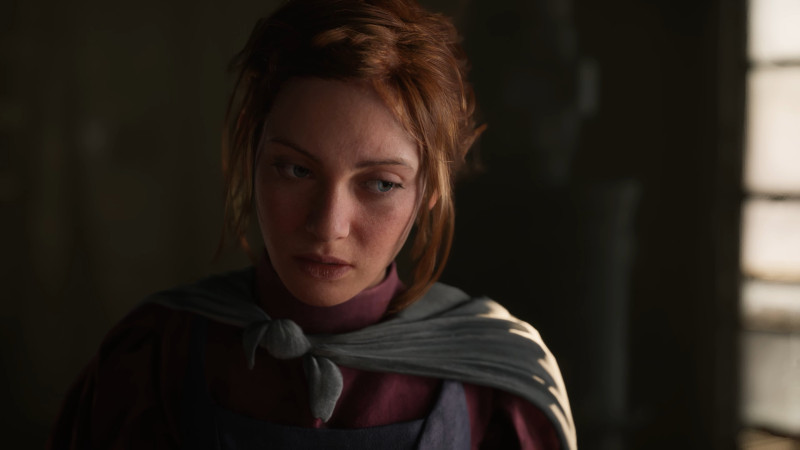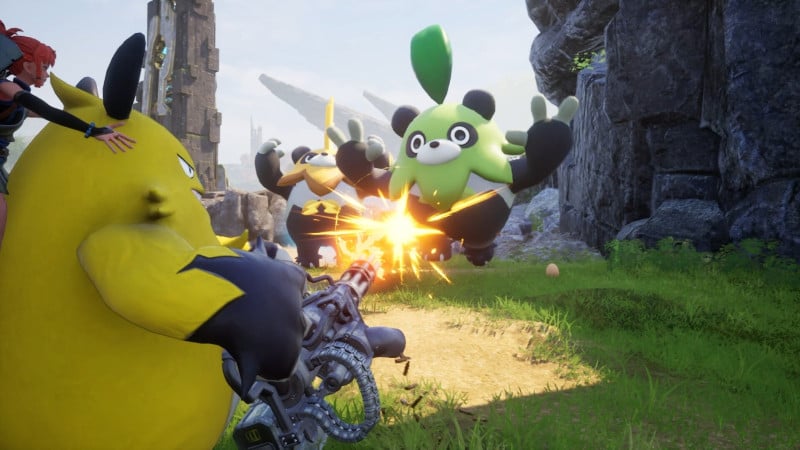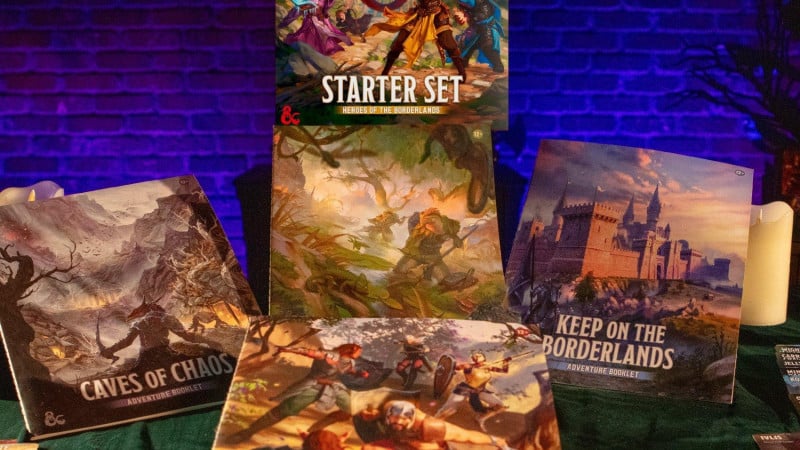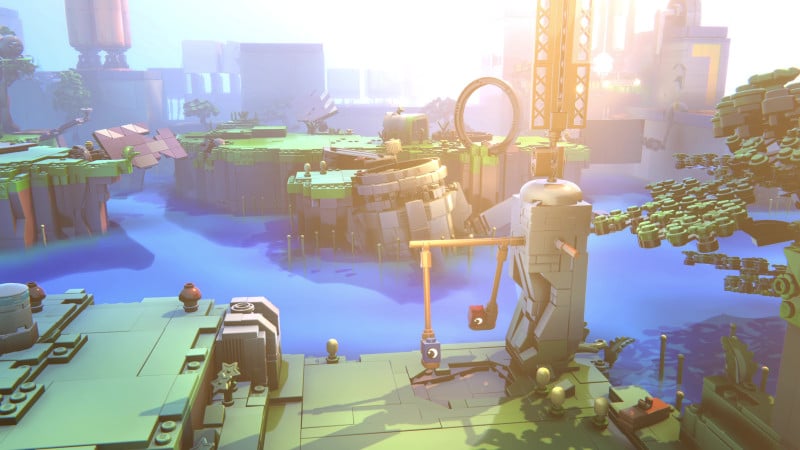Eriksholm: The Stolen Dream is the first game from newcomer studio River End Games, but it carries the confidence and ideas of a team that’s been working in the stealth genre for much longer. With its top-down view, wonderfully designed setting, and simple but engaging mechanics, each chapter feels like an hour-long play session in a beautiful diorama puzzle box. The gameplay is backed by a short and sweet story about home and perseverance against all odds, and includes stunning cinematics to match. When Eriksholm finally lays out all of its puzzle pieces on the board two-thirds through the game, the entire experience sings, inviting playful and smart experimentation. I just wish I had access to its tools sooner; when I fully grasped what I was capable of with all three protagonists simultaneously under my command, the credits soon began to roll.
The game begins in the Nordic-inspired city of Eriksholm, which brushes up against a whalepunk aesthetic with steam engines, hanging trolley carts, and verticality reminiscent of Arkane’s Dishonored series. It’s a gorgeous setting, with painterly visuals, jaw-dropping lighting, and a society that feels alive. After the city’s police kidnap her brother, protagonist Hanna sets out on an adventure to find him. She’s quickly pulled into a fun but straightforward conspiracy that leads her to abandoned mines, rusty and dank sewer canals, and ultimately, face to face with the most powerful people in the city. But she’s not without help, as she encounters a local resistance leader in the form of Alva, and the hardened but shy Sebastian, who join Hanna’s journey to save her brother and Eriksholm, too.
I like the dynamic between these three, as each represents a different aspect of the city and what it does to its less fortunate, less affluent citizens; Hanna, a child of the city just trying to survive, Alva, a young woman with a fire for revolution, and Sebastian, a solitary worker who keeps to himself. The way they play off each other narratively is great, backed by excellent voice work, but I enjoy the way these three harmonize mechanically even more.
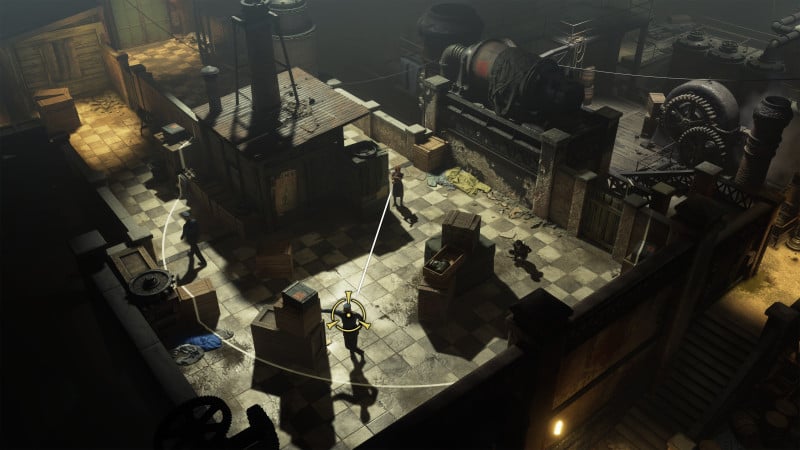
Hanna can crawl through ventilation shafts, escaping through secluded buildings to reach new destinations and find hidden collectibles, and shoot sleep darts with a blowpipe. Alva can climb drainpipes, bringing her to the rooftops of Eriksholm, where she can use her slingshot to shoot pebbles that create diversions or light sources to darken an area. And finally, Sebastian can choke guards out with his brute strength and swim in the surrounding water to reach new (usually lower) locations. The real treat of Eriksholm is scouting out the threats ahead, be it illuminating light or an abundance of guards or something else, and figuring out what each of these playable characters needs to do to allow the others to succeed forward.
Perhaps Alva needs to climb to a rooftop to shoot a pebble at the street light above, allowing Hanna to move closer to a nearby guard and take them out with a sleep dart obscured by the darkness Alva’s shot provided. I learn this guard is a sentry, meaning a dart alone won’t take them out, but luckily, Sebastian is nearby and can finish the job by choking the sleepy guard out. With the sentry out of their way, all three advance to a nearby hedge maze, where I need to think even harder about how their movesets will get me through this labyrinth filled with half a dozen guards whose sightlines crisscross in stressful ways. If you’re spotted by a guard and don’t hide before their sightline fills up, you’re met with an instant game over screen.
Fortunately, for the most part, checkpoints are generous. The game’s trial-and-error stealth puzzles and frequent game overs rarely stall the fun. But there were a few times I felt betrayed by a poor checkpoint that set me back a bit too far, and it doesn’t help that the game’s realistic animations and overall movement speed are quite slow. Still, I’m usually just a few minutes away from another great head-scratching puzzle, bookended with a eureka moment that doesn’t get old.
Eriksholm’s biggest folly, though, is that you spend almost half the game with just Hanna before Alva joins the fray, and by the time Sebastian rounds the trio out, there are just a few hours left to enjoy. I see why River End Games did this – the first few chapters with just Hanna serve as an extended tutorial and opportunity to discover how Eriksholm’s world reacts to your stealthy moves – but it holds back too long how great the game can be when Alva and Sebastian enter the picture.
Chapters begin and end with cutscenes that feature mystifyingly gorgeous visuals that rival the industry’s best, and the story Eriksholm tells is simple but full of heart, even if I saw its twists from a mile away. By the time I wrapped up the game, some 15 hours into it, I was left wanting more of this crew and world. But Eriksholm also ends with a neat bow, wrapping up most loose ends in satisfying fashion. My favorite moments, though, came in the miniature stories told by citizens and guards as I stealthed forward. One about a woman professing her affair to her husband, who lay unconscious in the dark thanks to my actions, left me chuckling. It’s an almost physical type of comedy afforded by the game’s diorama-esque player viewpoint, and it provides moments of sharp writing and wit throughout.
Eriksholm is a great puzzle game under the guise of a stealth adventure, utilizing the mechanics of the latter to create the pieces for the former. With a focused cast, three playable characters that synergize harmoniously, and a world whose nooks and crannies beg to be seen (with collectibles to reward your efforts), I’m left wanting more. Eriksholm, for the most part, avoids the critical error of stealth puzzles that grow beyond complex into frustrating, and turns in a series of challenges that are almost always fun and, in the final handful of hours, brilliant. I just wish the rest of the game matched its later heights.








